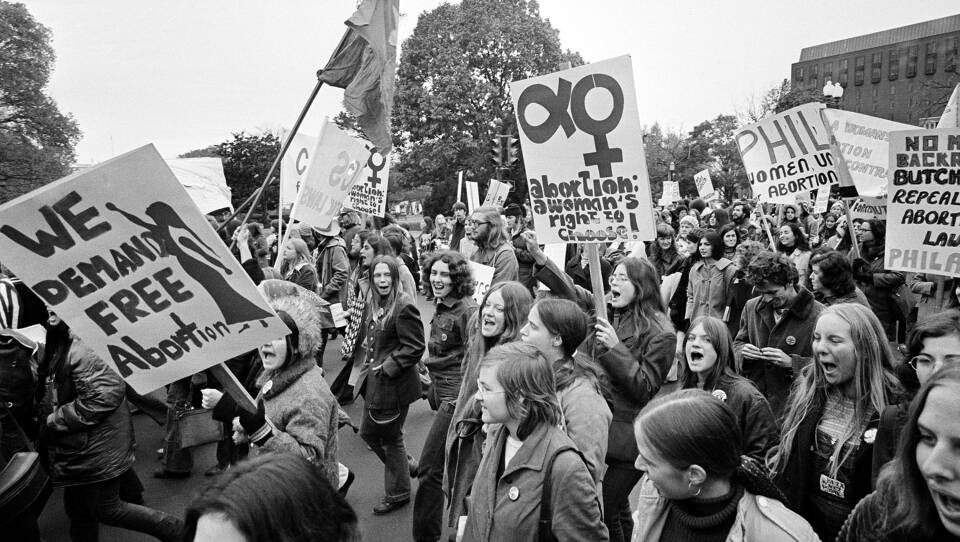The leaked draft of a Supreme Court opinion that could reverse the constitutional right to abortion has sent shockwaves across the nation. It's also brought renewed attention to Roe v. Wade, the landmark 1973 case that established that constitutional right. Northeastern University law professor and GBH legal analyst Daniel Medwed joined GBH's Morning Edition to take a closer look at the history of Roe v. Wade and abortion law. This transcript has been lightly edited for clarity.
Craig LeMoult: Let's start by setting the stage here, if we could. What was the legal status of abortion before 1973?
Daniel Medwed: Let's take a little foray into legal history here. So in the mid- to late-19th century, abortion was generally legal in the United States, at least during the first trimester, before the quickening of the fetus, before a woman could feel the fetus moving. Things began to change in the 1850s when the American Medical Association came out against abortion. And then later, the Catholic Church announced that it was banning abortion as well. Congress then passed a law called the Comstock Act that prohibited the distribution of contraceptives and abortion-inducing drugs through the mail. So by the 1880s or so, abortion was outlawed nationwide.
More National News
Then things shifted again, of course, in the 1960s with the rise of the women's rights movement and targeted litigation efforts designed to improve access to contraceptives. So by 1970, Hawaii had become the first state to legalize abortion, followed quickly by a couple other states: New York, Alaska and Washington. So by 1973, I think it's fair to say that the nation was quite divided on the topic of abortion.
LeMoult: So how did the Roe case come about? Was it a deliberate effort by lawyers to create a right to abortion when they went looking for plaintiffs, or was it something more organic, driven by women who wanted to get an abortion and couldn't?
Medwed: It was largely a conscious, strategic effort spearheaded by two young women lawyers in Texas: Linda Coffee and Sarah Weddington. Coffee, in particular, had spent some time in law school researching ways to challenge abortion restrictions, and she'd reached two key conclusions.
First, she thought that the best path forward substantively was to cite the nascent right to privacy that was a right that the Supreme Court had acknowledged in the 1965 case called Griswold v. Connecticut. Now, there's nothing in the Constitution that explicitly provides for a right to privacy, but the Supreme Court interpreted the document to infer or imply such a right. And this right to privacy had been cited in a really important 1969 California state case that overturned the arrest of a doctor who had performed a number of abortions.
The second conclusion that Coffee reached was more procedural. She thought that the best way to go forward was to file a class action on behalf of all Texas women who may want an abortion in the future. And if you're pursuing a class action, you have to find what's called a named plaintiff, someone who will represent the interests of the class. So essentially, Coffee bided her time waiting for a good plaintiff to emerge.
LeMoult: Tell us a little bit more about the plaintiff who later became known as Jane Roe.
Medwed: In late 1969, a lawyer friend of Coffee's introduced her to a pregnant Texan named Norma McCorvey. She'd already had two children and put them up for adoption. And she was pregnant for a third time and this time actually wanted to terminate the pregnancy. So Weddington and Coffee famously met with McCorvey, I think it was at a Dallas-area pizzeria in which they offered to represent her without charge in this lawsuit. McCorvey agreed, and they filed a lawsuit in federal trial court in the Dallas area. They named Henry Wade, who is the district attorney for Dallas County, as the defendant. And they won at the trial level, but Wade was undeterred. He vowed to continue to criminalize abortion in his county. That led to a number of twists and turns as the case meandered up to the U.S. Supreme Court.
LeMoult: So the case goes up to the Supreme Court, and as we all know it, resulted in an opinion that recognized a federal constitutional right to abortion. What were the parameters of that decision?
Medwed: Weddington actually argued the case. Coffee believed that she was the better of the two as an oral advocate, and she won in a '72 opinion authored by Justice Harry Blackmun. As you noted, Craig, the Supreme Court recognized a federal constitutional right to abortion, but it wasn't unqualified.
Here's what it looked like at the time: The court divided pregnancy into three trimesters, and during the first trimester, a woman had the unfettered, autonomous right to decide whether to terminate the pregnancy. But in the second trimester, the court reasoned that the government could regulate abortion procedures so long as it didn't ban abortions entirely. And then in the third trimester, when a fetus might be viable, the court said that states could ban abortion so long as there was a carve-out if the woman's health was in grave danger. So that's effectively how things looked in the immediate aftermath of Roe.
LeMoult: So what happened in the decades between then and now? Did the right to abortion change over time?
Medwed: Well, on the one hand, the Supreme Court kept the core principle of Roe v. Wade intact, that there is a right to abortion at the earlier stages of a pregnancy. But on the other hand, the court whittled away at that core, hollowed it out a little bit because many states started to pass restrictions on access to abortion that limited the time, place and manner of how you could actually get an abortion.
And in 1992, the Supreme Court heard a really important case from Pennsylvania called Casey , which upheld the concept of Roe but acknowledged that government restrictions on abortion procedure are OK as long as they do not pose an "undue burden" on the woman's right to choose. And so for the next three decades, really leading up today, much of the litigation in this area concerned what is or what is not an undue burden on the right to choose.
LeMoult: Thank you so much, Daniel, for that history lesson. There's a lot that goes into this, a lot that's led up to where we are now. And I think still a lot of questions about what's what's coming next.
Medwed: I think you're right. We'll have to see.












